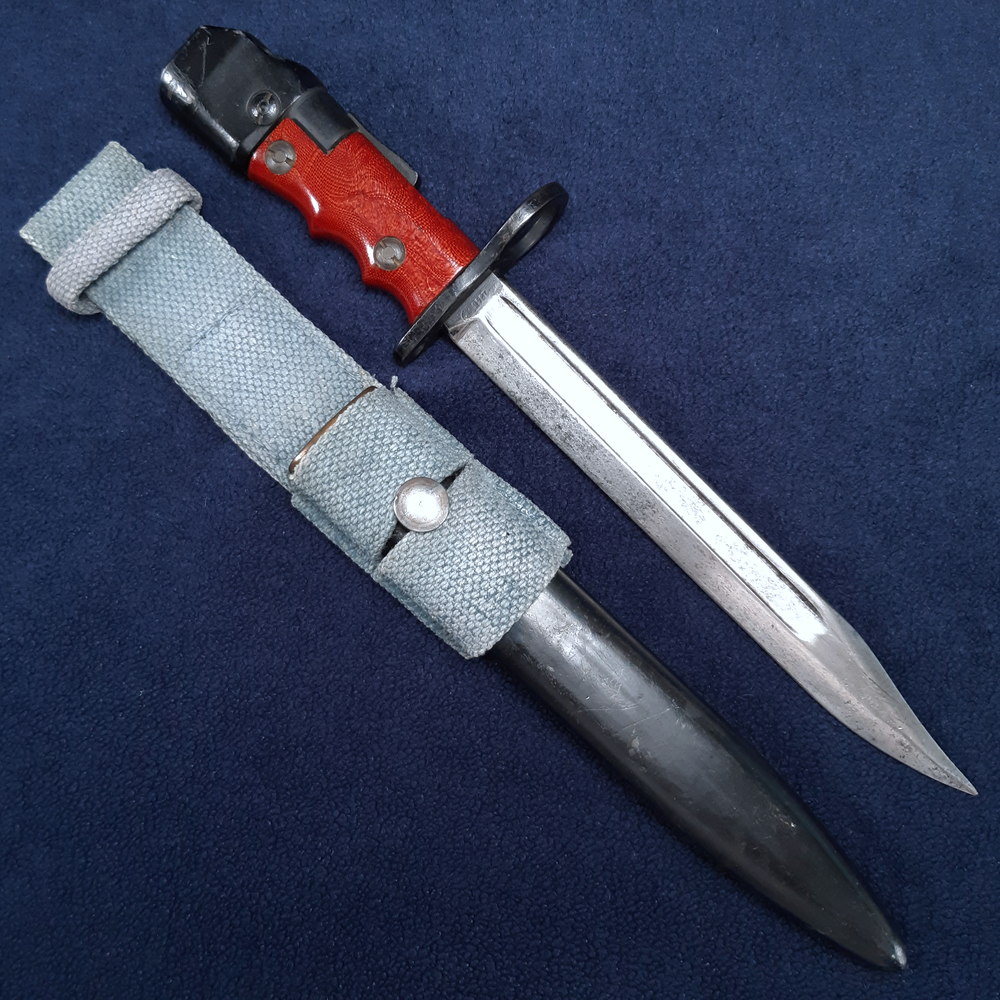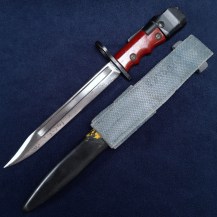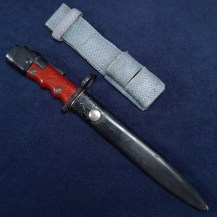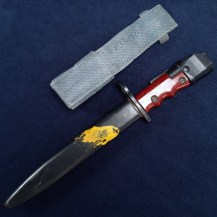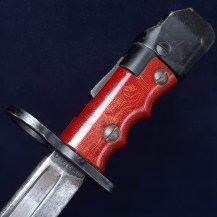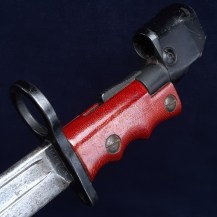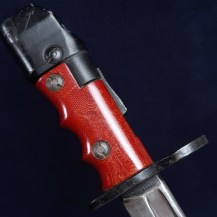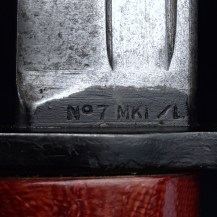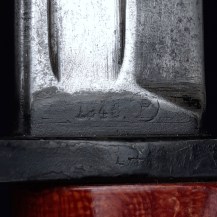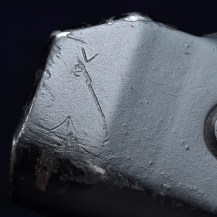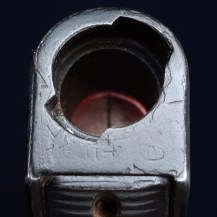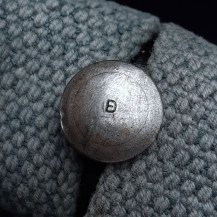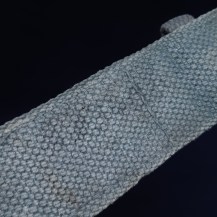British Lee Enfield No. 7 Mk 1 Land Service Bayonet, Dated 1946 by Poole
Single-fullered bowie knife blade with clipped point, blued for 5mm at the ricasso. Red-brown grips made of Paxolin (resin-impregnated paper, similar to Micarta, and widely used today in circuit boards). Steel scabbard with brass throat piece and circular frog stud. Blue canvas 1937 Pattern Royal Air Force frog with retaining loop. Hilt and pommel lacquered.
The blade is stamped on one side at the ricasso with ‘No 7 MK 1/L’ and on the other side with a ‘P’ within a circle indicating the manufacturer Poole, as well as the manufacture date ‘1946’. The pommel is stamped on one side with a broad arrow War Department mark and on its base with some faint numbering, possibly ‘114’.
The exposed track for the sliding button is stamped with a broad arrow War Department mark and faint lettering. The frog stud of the scabbard is stamped with a mark indicating manufacture at the Royal Small Arms Factory at Enfield: a superimposed letter E and D, resembling a D with a horizontal strikethrough.
The reverse of the frog is faintly inked with some lettering (illegible). The rear side of the scabbard has been daubed with a patch of yellow paint, almost all hidden by the frog when it is fitted.
The penultimate model of bayonet designed for the Lee-Enfield No. 4 rifle and Sten Mk 5 submachine gun, the No. 7 was an attempt to produce a bayonet that was equally useful as a utility/fighting knife and a mounted bayonet, by way of an innovative rotating pommel which contains the locking mechanism. 330,000 were produced between 1944 and 1948, but doubts about the rigidity of the mechanism under stress and its high cost of manufacture meant that the No. 7 was largely passed over for the simpler No. 9. The bayonet designed for the ill-fated EM series of experimental bullpup service rifles was essentially a strengthened No. 7.

